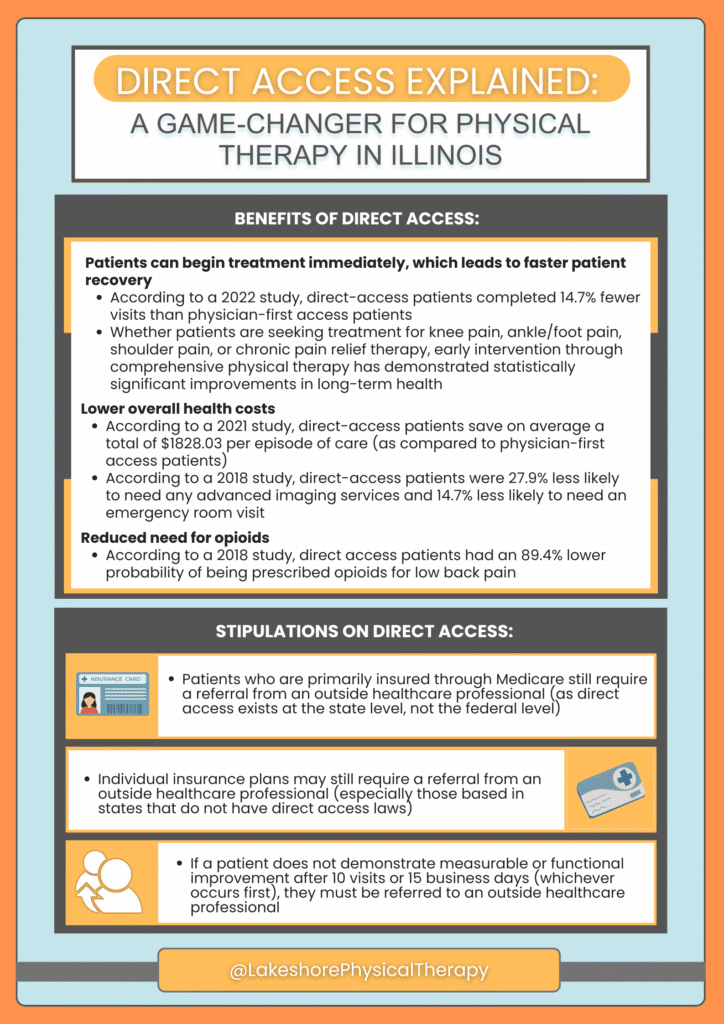Direct Access Explained: A Game-Changer for Physical Therapy in Illinois
Since August 16, 2018, Illinois allows patients to access physical therapy directly, without needing a prescription from another healthcare provider.
Benefits of direct access:
- Patients can begin treatment immediately, which leads to faster recovery outcomes, as shown in a 2023 clinical study.
- According to a 2022 study, direct-access patients completed 14.7% fewer visits than physician-first access patients
- Whether patients are seeking treatment for knee pain, ankle/foot pain, shoulder pain, or chronic pain relief therapy, early intervention through comprehensive physical therapy has demonstrated statistically significant improvements in long-term health
- Lower overall health costs
- According to a 2021 study, direct-access patients save on average a total of $1828.03 per episode of care (as compared to physician-first access patients)
- According to a 2018 study, direct-access patients were 27.9% less likely to need any advanced imaging services and 14.7% less likely to need an emergency room visit
- Reduced need for opioids
- A 2018 study found that direct access patients were 89.4% less likely to receive opioid prescriptions for low back pain.

Stipulations on direct access:
- Patients with Medicare coverage still need a referral from another healthcare professional, because direct access applies at the state level—not the federal level.
- Individual insurance plans may still require a referral from an outside healthcare professional (especially those based in states that do not have direct access laws)
- If patients don’t show measurable or functional improvement after 10 visits or 15 business days (whichever comes first), the therapist must refer them to another healthcare provider.
References:
J. Clin. Med. 2023, 12(18), 5832; https://doi.org/10.3390/jcm12185832
Physical Therapy, Volume 101, Issue 1, January 2021, pzaa201, https://doi.org/10.1093/ptj/pzaa201
Health Serv Res. 2018 Dec;53(6):4629-4646. doi: 10.1111/1475-6773.12984. Epub 2018 May 23.
J Man Manip Ther. 2022 Jul 29;30(4):199–206. doi: 10.1080/10669817.2022.2099893
